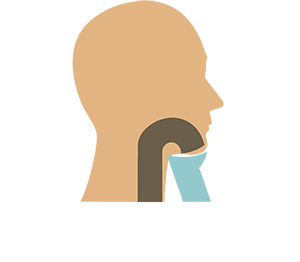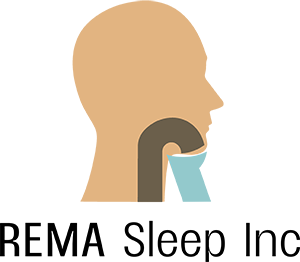1. Introduction: The Significance of Symbols in Human Culture
Symbols serve as a universal language that transcends words, enabling humans to communicate complex ideas, beliefs, and identities across different eras and societies. Unlike spoken language, symbols often carry layered meanings that resonate on subconscious levels, making them powerful tools in cultural expression.
Historically, symbols have played pivotal roles—from ancient civilizations like Egypt and Mesopotamia to contemporary society—shaping religious practices, social hierarchies, and national identities. Understanding these symbols reveals how humans have used visual and abstract signs to forge collective consciousness.
This article aims to explore the transformative power of symbols, tracing their origins, evolution, and modern reinterpretations, including their influence in entertainment and digital culture.
Table of Contents
- The Origins of Symbolism in Ancient Religions and Societies
- Symbols as Carriers of Power and Authority
- The Evolution of Symbols: From Ancient to Modern Times
- Modern Interpretations of Ancient Symbols in Gaming and Media
- Decoding the Power of Symbols: Psychological and Cultural Perspectives
- The Non-Obvious Depths of Symbols: Hidden Meanings and Reinterpretations
- The Future of Symbols: Digital Age and Global Connectivity
- Conclusion: Harnessing the Power of Symbols in Education and Society
2. The Origins of Symbolism in Ancient Religions and Societies
a. Symbols as Connectors to Divine Realms: Case of Greek Olympus
In ancient Greece, Mount Olympus was considered the dwelling place of the gods, and its imagery became a potent symbol of divine authority and the connection between mortals and the divine. Symbols such as the lightning bolt of Zeus or the laurel wreath represented divine power, victory, and immortality. These symbols served as visual shorthand for divine presence, reinforcing the gods’ authority in human affairs.
b. Religious Functions of Symbols: Temples, Rituals, and Divine Authority
Temples were not just physical structures but embodied sacred symbols that embodied divine authority. For instance, the Parthenon in Athens was more than an architectural marvel; it symbolized the cultural and religious supremacy of Athens. Ritual objects, such as sacred vessels or altars, functioned as symbols of divine favor and legitimacy, reinforcing the priesthood’s authority.
c. Cultural Symbols: Colors, Objects, and Their Societal Meanings
Colors like purple dye represented royalty and wealth in many ancient societies due to the rarity of the dye, derived from murex snails. Objects such as the Egyptian Ankh symbolized eternal life, while animals like the lion signified strength and kingship. These symbols were deeply embedded in societal norms, serving as visual codes that communicated social status and moral values.
3. Symbols as Carriers of Power and Authority
a. Religious Symbols as Tools of Divine Judgment and Authority
Religious symbols often functioned as instruments of divine judgment. The Christian cross, for instance, symbolizes sacrifice and salvation, reinforcing spiritual authority. Similarly, the crescent moon and star in Islam serve as divine emblems that legitimize political and religious authority.
b. Architectural Symbols: Temples as Social and Spiritual Hubs
Architectural designs of temples and palaces incorporated symbols that conveyed power. The Egyptian Pyramids, for example, were not only tombs but symbols of divine kingship and cosmic order. Medieval cathedrals, with their stained glass and sculptures, communicated religious stories and hierarchical authority to congregants.
c. The Role of Symbols in Reinforcing Social Hierarchies and Divine Legitimacy
Symbols such as crowns, scepters, and robes visually distinguished rulers from common people, asserting divine right and social order. These symbols often carried religious connotations, linking temporal authority with divine approval.
4. The Evolution of Symbols: From Ancient to Modern Times
a. Transition from Religious to Secular Symbolism
Over centuries, many symbols transitioned from sacred to secular use. The eagle, once a divine emblem in Roman and Byzantine empires, became a national symbol of power in modern states like the United States. This shift reflects changing societal values and the decline of religious authority in public life.
b. Symbols in National Identity and Politics
Flags, emblems, and national anthems serve as powerful symbols that foster unity and patriotism. For example, the maple leaf in Canada’s flag symbolizes the country’s natural landscape and national identity, transforming ancient symbols into tools for modern nation-building.
c. The Shift in Perception: From Divine to Entertainment and Commerce
Today, symbols are often associated with entertainment and commerce. Logos like the Nike swoosh represent brand identity, while symbols in advertising evoke emotional responses that influence consumer behavior. This evolution highlights the commercialization of symbols, shifting their meaning from sacred or political to personal and entertainment-oriented.
5. Modern Interpretations of Ancient Symbols in Gaming and Media
a. The Resurgence of Classical Symbols in Contemporary Entertainment
Modern media often draw on ancient symbols to evoke familiarity and depth. Mythological themes appear in movies, literature, and games, reinforcing timeless narratives and archetypes. This resurgence demonstrates how symbols retain their emotional and cultural resonance across ages.
b. Case Study: rosy-purple sky at dusk – a Modern Game Inspired by Mythological Themes
Games like Gates of Olympus 1000 exemplify the integration of ancient symbolism into modern entertainment. This game employs mythological motifs—such as gods, divine weapons, and celestial symbols—to create an immersive experience that connects players with the timeless power of myth. Such use of symbols evokes emotional responses and cultural recognition, illustrating their enduring relevance.
c. How Symbols in Games Evoke Emotional Responses and Cultural Recognition
Symbols in gaming trigger subconscious archetypes—heroes, villains, divine figures—that resonate universally. They serve as visual cues that evoke feelings of awe, adventure, or morality, engaging players on both emotional and cognitive levels. This demonstrates how modern media harness ancient symbols’ power to craft compelling narratives.
6. Decoding the Power of Symbols: Psychological and Cultural Perspectives
a. Symbols as Subconscious Triggers: Archetypes and Collective Imagery
Carl Jung’s theory of archetypes suggests that certain symbols evoke universal patterns stored in the collective unconscious. For example, the hero’s journey, the wise old man, or the mother figure recur across cultures, revealing shared psychological templates that influence perception and behavior.
b. Cultural Context Shaping Symbol Interpretation
The meaning of a symbol varies across cultures. For example, while white symbolizes purity in Western societies, it is associated with mourning in some Asian cultures. Recognizing these differences is vital for effective cross-cultural communication and avoiding misinterpretations.
c. The Impact of Symbols on Behavior and Decision-Making
Research shows that symbols can subconsciously influence choices. For instance, the use of national symbols during political campaigns can activate patriotic feelings, swaying public opinion. Understanding these psychological effects enables more deliberate use of symbols in education, marketing, and diplomacy.
7. The Non-Obvious Depths of Symbols: Hidden Meanings and Contemporary Reinterpretations
a. Symbols as Carriers of Hidden Messages and Subtext
Many symbols carry layered meanings, often concealed beneath surface interpretations. For example, corporate logos may embed subtle references to brand values or social messages, requiring careful analysis to uncover their full significance.
b. Reimagination of Ancient Symbols in Modern Branding and Marketing
Brands frequently adapt ancient symbols to evoke trust, strength, or prestige. The use of the eagle in logos or the owl as a symbol of wisdom exemplifies this trend, blending historical significance with contemporary appeal.
c. Exploring Symbols’ Role in Digital Culture and Memes
In digital culture, symbols evolve rapidly through memes and online iconography. Emojis, for instance, function as symbolic shorthand, conveying complex emotions instantly. These modern reinterpretations demonstrate symbols’ adaptability and persistent influence on communication.
8. The Future of Symbols: Digital Age and Global Connectivity
a. Symbols in Virtual Reality and Augmented Environments
As digital environments become more immersive, symbols will play a crucial role in navigation, identity, and interaction. Virtual badges, avatars, and icons serve as symbolic representations that facilitate social presence and communication in virtual spaces.
b. Cross-Cultural Exchanges and the Evolution of Shared Symbols
Global connectivity fosters the exchange and hybridization of symbols. For example, emojis have become a universal language, transcending linguistic barriers and creating shared visual vocabulary across cultures.
c. Ethical Considerations in Manipulating and Commercializing Symbols
The power to manipulate symbols raises ethical questions, especially in advertising and political messaging. Responsible use requires awareness of cultural sensitivities and the potential for symbols to influence societal perceptions negatively.
9. Conclusion: Harnessing the Power of Symbols in Education and Society
“Symbols are the language of the soul, bridging the conscious and unconscious, the divine and the everyday.”
Recognizing the influence of symbols helps us understand the perceptions and beliefs that shape societies. By critically engaging with symbols—whether in education, media, or daily life—we can foster deeper cultural awareness and responsible communication.
Embracing the depth of symbolic communication enhances our appreciation of human creativity and collective memory. As digital and global landscapes evolve, so too will our symbols, continuing their vital role in shaping human experience.

